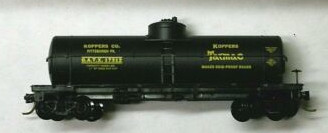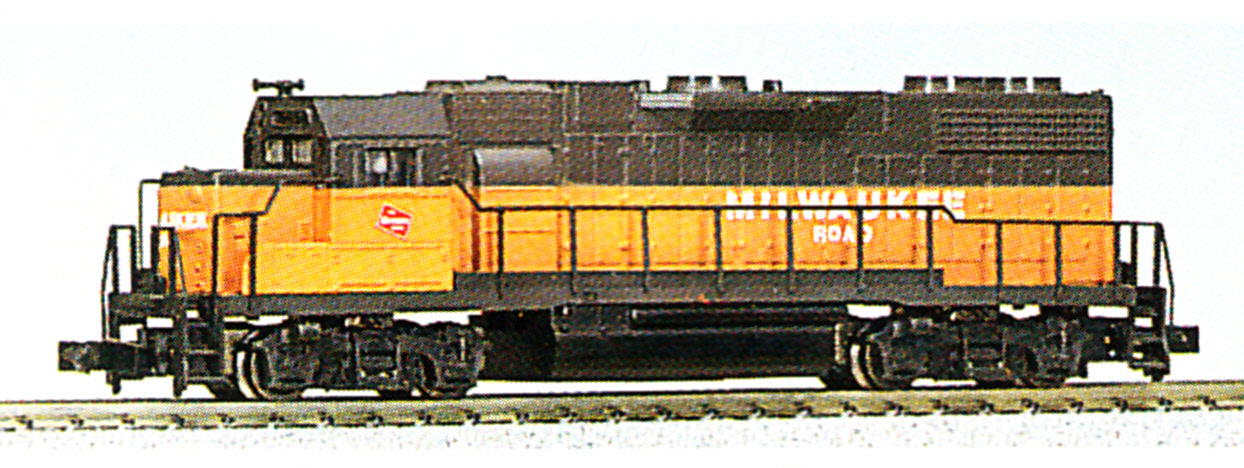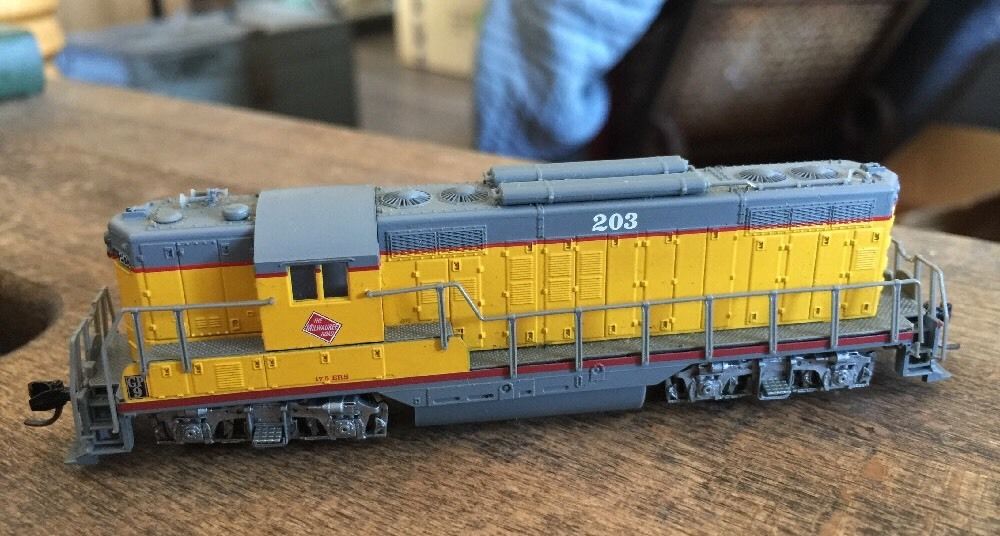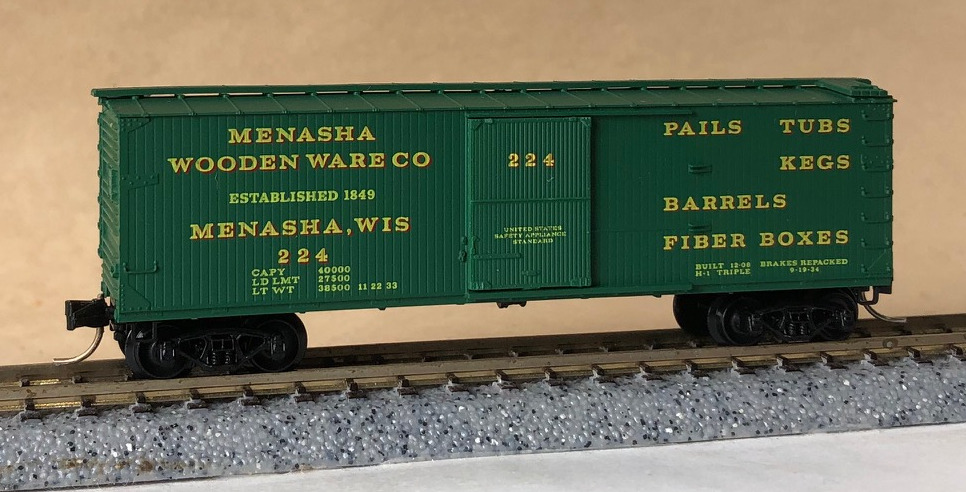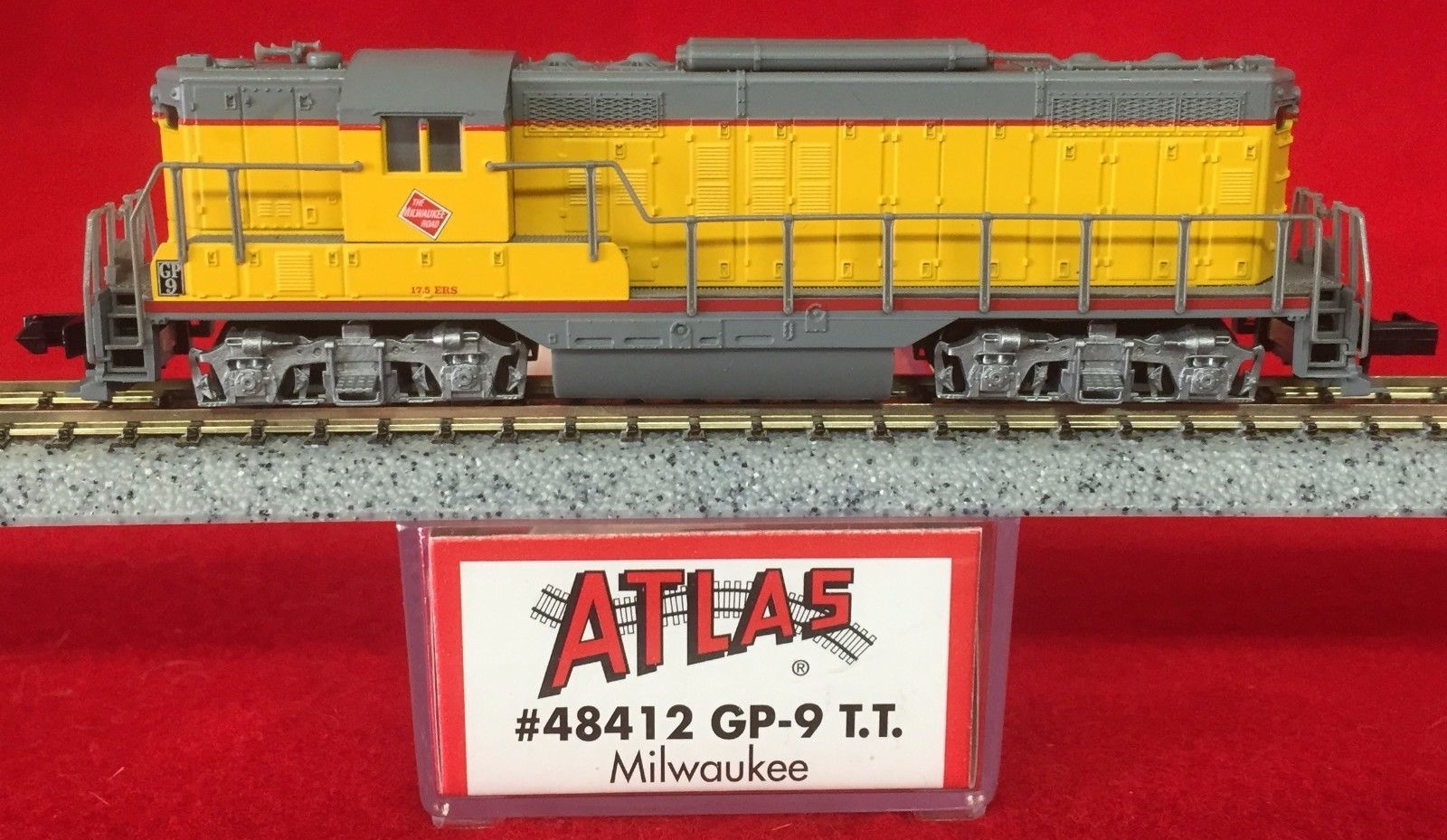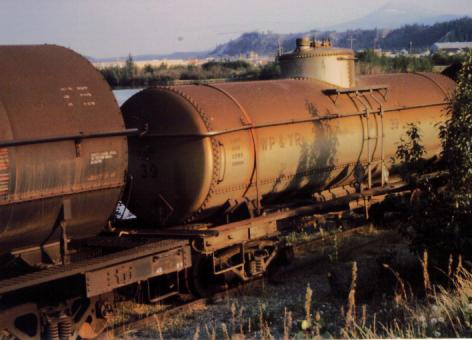Model Information: Dating back to 1979, this is the oldest and most popular of Micro-Trains tank cars. Over 200 different regular issues of this body style have been produced as well as hundreds more special runs, including the 2016 N Scale Enthusiast banquet car.
This car models tank cars of approximately 8,000 gallons. The prototypes were built in the 1950's and appeared on freight railroads across the United States and Canada.
This car models tank cars of approximately 8,000 gallons. The prototypes were built in the 1950's and appeared on freight railroads across the United States and Canada.
Prototype History: Single Dome tank cars are a railroad staple. They have been around since the first half of the 20th century. This length car can handle about 10,000 gallons. These railcars carry a wide array of commodities, including liquid fertilizers, chemicals, fuel oils and asphalt, and food-grade oils. Tank cars can be pressurized or non-pressurized, insulated or non-insulated. Single dome cars carry only a single commodity at once. Food-service tank cars may be lined with stainless steel, glass, or plastic. Tank cars carrying dangerous goods are generally made of different types of steel, depending on the intended cargo and operating pressure. They may also be lined with rubber or coated with specialized coatings for tank protection or product purity purpose. The tank heads are also stronger to prevent ruptures during accidents.
One common version is the ACF Type 27 jacketed tank car with expansion dome which was in common use by many railroads and oil companies.
One common version is the ACF Type 27 jacketed tank car with expansion dome which was in common use by many railroads and oil companies.
Road Name History:  Koppers is a global chemical and materials company based in Pittsburgh, Pennsylvania, United States in an art-deco 1920s skyscraper, the Koppers Tower.
Koppers is a global chemical and materials company based in Pittsburgh, Pennsylvania, United States in an art-deco 1920s skyscraper, the Koppers Tower.
In 1943, Koppers, at the US Government's behest, built a factory in Kobuta, Pennsylvania on the left bank of the Ohio River just downriver from Beaver, to manufacture styrene-butadiene monomer, a building block used to make a form of synthetic rubber for the World War II defense effort.
In 1951, at Port Arthur, Texas, the company built a plant to manufacture the chemical monomer ethylbenzene, using as raw materials ethylene from the nearby Gulf Oil refinery, and benzene, which was a byproduct of the company's coke ovens in Pennsylvania and which was shipped down to Texas by barge. The ethylbenzene produced there was then shipped by barge back up to the Kobuta plant where it was converted to styrene monomer, and then polymerized to make expandable polystyrene. In the early 1950s, the company purchased a license to manufacture polyethylene at its Port Arthur plant. These chemical operations later were the basis for forming a new corporate entity with Sinclair Oil Corporation to form the Sinclair-Koppers Company in 1965.
In early 1988 Beazer, a British conglomerate run by one of the foremost corporate raiders of the 1980s, successfully launched a hostile takeover of Koppers for $1.81 billion ($3.8 billion today). The sale was completed on June 17, 1988. A smaller, more streamlined domestic business unit of Koppers was bought back by local management in the early 2000s, and although much simpler than the once sprawling chemical and aggregate conglomerate of the early-to-mid 20th century, Koppers has once again become successful at its core businesses. In 2006 the new Beazer-free independent Koppers again went public.

In 1943, Koppers, at the US Government's behest, built a factory in Kobuta, Pennsylvania on the left bank of the Ohio River just downriver from Beaver, to manufacture styrene-butadiene monomer, a building block used to make a form of synthetic rubber for the World War II defense effort.
In 1951, at Port Arthur, Texas, the company built a plant to manufacture the chemical monomer ethylbenzene, using as raw materials ethylene from the nearby Gulf Oil refinery, and benzene, which was a byproduct of the company's coke ovens in Pennsylvania and which was shipped down to Texas by barge. The ethylbenzene produced there was then shipped by barge back up to the Kobuta plant where it was converted to styrene monomer, and then polymerized to make expandable polystyrene. In the early 1950s, the company purchased a license to manufacture polyethylene at its Port Arthur plant. These chemical operations later were the basis for forming a new corporate entity with Sinclair Oil Corporation to form the Sinclair-Koppers Company in 1965.
In early 1988 Beazer, a British conglomerate run by one of the foremost corporate raiders of the 1980s, successfully launched a hostile takeover of Koppers for $1.81 billion ($3.8 billion today). The sale was completed on June 17, 1988. A smaller, more streamlined domestic business unit of Koppers was bought back by local management in the early 2000s, and although much simpler than the once sprawling chemical and aggregate conglomerate of the early-to-mid 20th century, Koppers has once again become successful at its core businesses. In 2006 the new Beazer-free independent Koppers again went public.
Brand/Importer Information: Micro-Trains is the brand name used by both Kadee Quality Products and Micro-Trains Line. For a history of the relationship between the brand and the two companies, please consult our Micro-Trains Collector's Guide.
Manufacturer Information:  Kadee Quality Products originally got involved in N-Scale by producing a scaled-down version of their successful HO Magne-Matic knuckle coupler system. This coupler was superior to the ubiquitous 'Rapido' style coupler due to two primary factors: superior realistic appearance and the ability to automatically uncouple when stopped over a magnet embedded in a section of track. The success of these couplers in N-Scale quickly translated to the production of trucks, wheels and in 1972 a release of ready-to-run box cars.
Kadee Quality Products originally got involved in N-Scale by producing a scaled-down version of their successful HO Magne-Matic knuckle coupler system. This coupler was superior to the ubiquitous 'Rapido' style coupler due to two primary factors: superior realistic appearance and the ability to automatically uncouple when stopped over a magnet embedded in a section of track. The success of these couplers in N-Scale quickly translated to the production of trucks, wheels and in 1972 a release of ready-to-run box cars.
In October 1990 Kadee separated in two companies, with the newly created Micro-Trains® Line Co. continuing the Z, Nn3, and N Scale product ranges, with Kadee retaining the HO range.

In October 1990 Kadee separated in two companies, with the newly created Micro-Trains® Line Co. continuing the Z, Nn3, and N Scale product ranges, with Kadee retaining the HO range.
Item created by: nscalemodeler160 on 2016-04-04 04:36:59. Last edited by gdm on 2020-05-10 21:56:24
If you see errors or missing data in this entry, please feel free to log in and edit it. Anyone with a Gmail account can log in instantly.
If you see errors or missing data in this entry, please feel free to log in and edit it. Anyone with a Gmail account can log in instantly.


